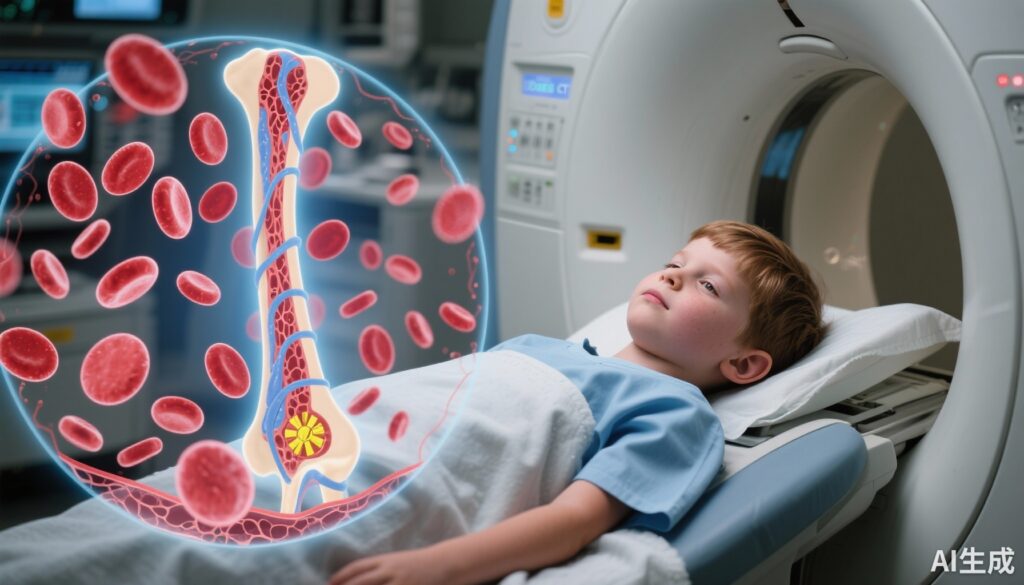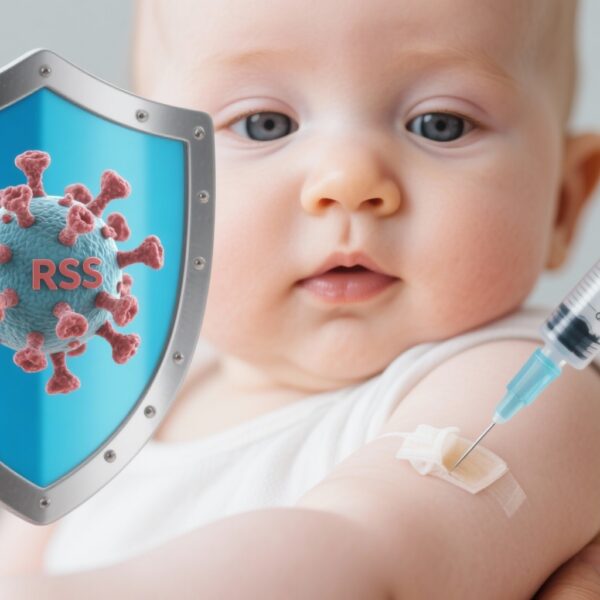Highlight
- Retrospective cohort study of over 3.7 million children quantifies radiation doses to active bone marrow from diagnostic imaging.
- Demonstrates a dose-dependent increase in risk of hematologic cancers, particularly lymphoid cancers, associated with cumulative radiation exposure.
- Cumulative relative risk reaches 3.59 for exposures between 50 to less than 100 mGy, with an estimated 10.1% of pediatric hematologic cancers potentially attributable to imaging radiation.
- Findings support balancing diagnostic benefits with radiation risk, emphasizing cautious use of high-dose imaging modalities such as CT scans in children and adolescents.
Study Background and Disease Burden
Pediatric and adolescent hematologic cancers, including lymphoid malignancies and acute leukemias, represent a significant clinical burden with complex etiology involving genetic and environmental factors. Medical imaging, particularly computed tomography (CT), has revolutionized diagnosis but involves ionizing radiation exposure, which is a known carcinogen. Children and adolescents are especially vulnerable due to developing tissues and longer post-exposure life expectancy during which radiation-induced malignancies can emerge. Quantifying the risk of radiation-induced hematologic cancers from routine medical imaging is imperative for informed clinical decisions, risk-benefit analyses, and optimized imaging protocols tailored to minimize harm while achieving diagnostic accuracy.
Study Design
This study utilized a retrospective cohort design encompassing 3,724,623 children born between 1996 and 2016 within six U.S. health care systems and Ontario, Canada. Subjects were followed longitudinally until the earliest occurrence of hematologic cancer, benign tumor diagnosis, death, discontinuation of health care coverage, attainment of 21 years of age, or December 31, 2017. Radiation doses to active bone marrow from all medical imaging procedures were carefully quantified. The investigators applied continuous-time hazards models incorporating a 6-month latency period to estimate the association between cumulative radiation exposure (measured in milligray [mGy]) and the risk of hematologic malignancies, compared with no radiation exposure. This design allows capturing dose-response relationships while controlling for potential confounders inherent to observational cohorts.
Key Findings
Over 35 million person-years of follow-up (mean of 10.1 years per child) yielded 2,961 hematologic cancer diagnoses. The majority (79.3%) were lymphoid cancers, followed by myeloid or acute leukemia (15.5%) and histiocytic/dendritic-cell cancers (4.4%). Among children with radiation exposure ≥1 mGy, the mean cumulative dose was 14.0±23.1 mGy; children who developed hematologic cancer experienced a higher mean exposure of 24.5±36.4 mGy. For context, a single CT scan of the head confers approximately 13.7 mGy to bone marrow, underscoring the clinical relevance of these exposures.
The study demonstrated a dose-dependent increase in cancer risk:
– Relative risk (RR) was 1.41 (95% CI, 1.11 to 1.78) for doses of 1 to <5 mGy.
– RR increased to 1.82 (95% CI, 1.33 to 2.43) for 15 to <20 mGy.
– RR reached 3.59 (95% CI, 2.22 to 5.44) for exposures of 50 to <100 mGy.
The excess relative risk per 100 mGy was estimated at 2.54 (95% CI, 1.70 to 3.51). Comparing exposure of 30 mGy versus none yielded an RR of 1.76 (95% CI, 1.51 to 2.05), indicating a substantial increase even at moderate cumulative doses.
Subgroup analyses revealed increased risks across most hematologic cancer subtypes, supporting the biologic plausibility of bone marrow radiation damage driving oncogenesis. The attributable fraction estimate suggested that 10.1% (95% CI, 5.8 to 14.2) of hematologic cancers in this cohort could be linked to radiation from medical imaging. Notably, higher-risk contributions were associated with higher-dose modalities, such as CT scans.
Excess cumulative incidence by age 21 among children exposed to ≥30 mGy (mean 57 mGy) was 25.6 per 10,000, representing a quantifiable increase in absolute risk.
Expert Commentary
This landmark study by Smith-Bindman et al. provides robust epidemiologic evidence of a dose-dependent association between cumulative radiation from medical imaging and pediatric hematologic cancer risk. The extraordinarily large, multinational cohort enhances generalizability, and meticulous dosimetry strengthens causal inference.
However, as with all observational studies, residual confounding (e.g., underlying health status that led to imaging) cannot be entirely excluded. The six-month lag reduces reverse causation but does not negate it fully. Furthermore, technology and imaging protocols have evolved since the cohort inception, potentially modifying contemporary dose exposures.
Biologically, active bone marrow is highly radiosensitive. The study’s findings align with radiation carcinogenesis principles and reinforce the long-held concern that ionizing radiation exposure in early life may increase malignancy risk later. Current pediatric imaging guidelines promote minimizing radiation dose and using alternative modalities (e.g., ultrasound, MRI) when feasible.
Clinicians must continue to balance the critical diagnostic benefits of imaging against these small but real risks, practicing judicious test ordering, applying dose optimization, and engaging in shared decision-making with families. Future research should focus on refining dose thresholds, radiation reduction strategies, and longitudinal outcomes to improve safety profiles.
Conclusion
The study establishes a clear association between medical imaging-related radiation exposure and elevated hematologic cancer risk in children and adolescents. Although the absolute risk increase is small, the relative risk is significant and dose-dependent, particularly with higher-exposure imaging such as CT scans. This evidence underscores the imperative for prudent imaging use, careful risk communication, and continuing efforts to minimize radiation dose in pediatric populations to reduce preventable radiation-induced malignancies.
References
Smith-Bindman R, Alber SA, Kwan ML, Pequeno P, Bolch WE, Bowles EJA, et al. Medical Imaging and Pediatric and Adolescent Hematologic Cancer Risk. N Engl J Med. 2025 Sept 17; doi:10.1056/NEJMoa2502098. PMID: 40961449; PMCID: PMC12445590.
Brenner DJ, Hall EJ. Computed tomography — an increasing source of radiation exposure. N Engl J Med. 2007;357(22):2277-2284.
Pearce MS, Salotti JA, Little MP, et al. Radiation exposure from CT scans in childhood and subsequent risk of leukemia and brain tumors: a retrospective cohort study. Lancet. 2012;380(9840):499-505.
Brody AS, Frush DP, Huda W, Brent RL. Radiation risk to children from computed tomography. Pediatr Radiol. 2007;37(12):1249-1258.



